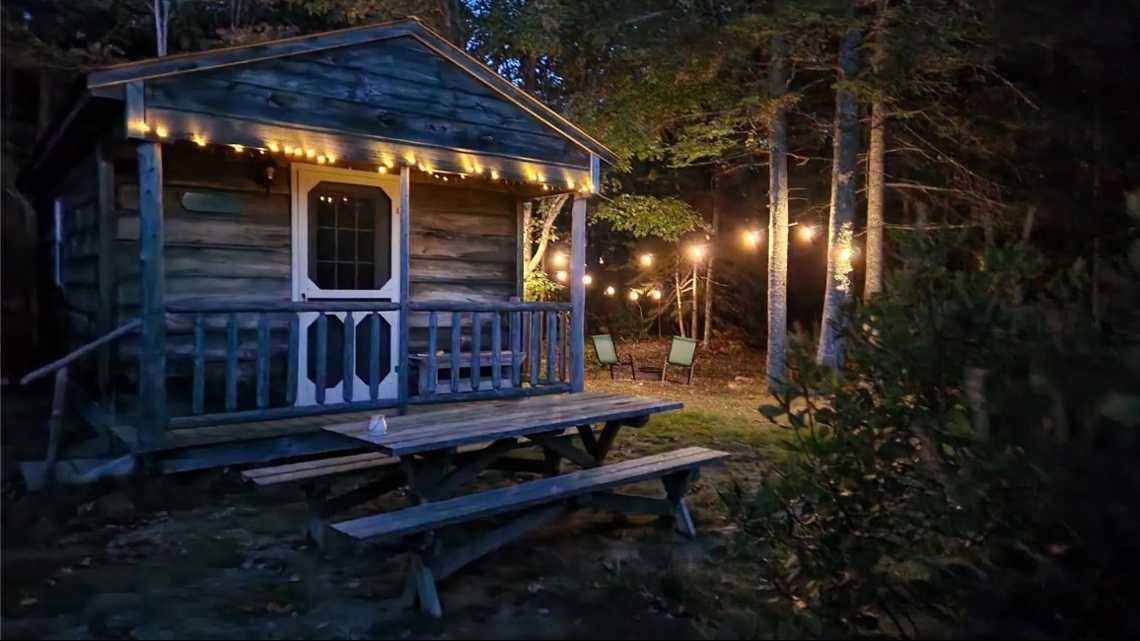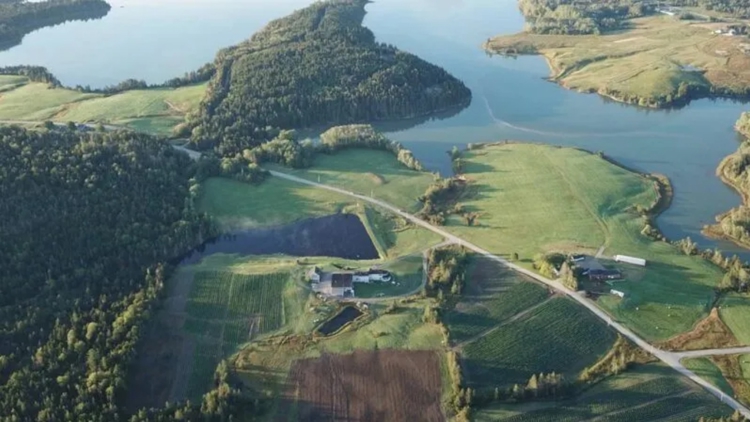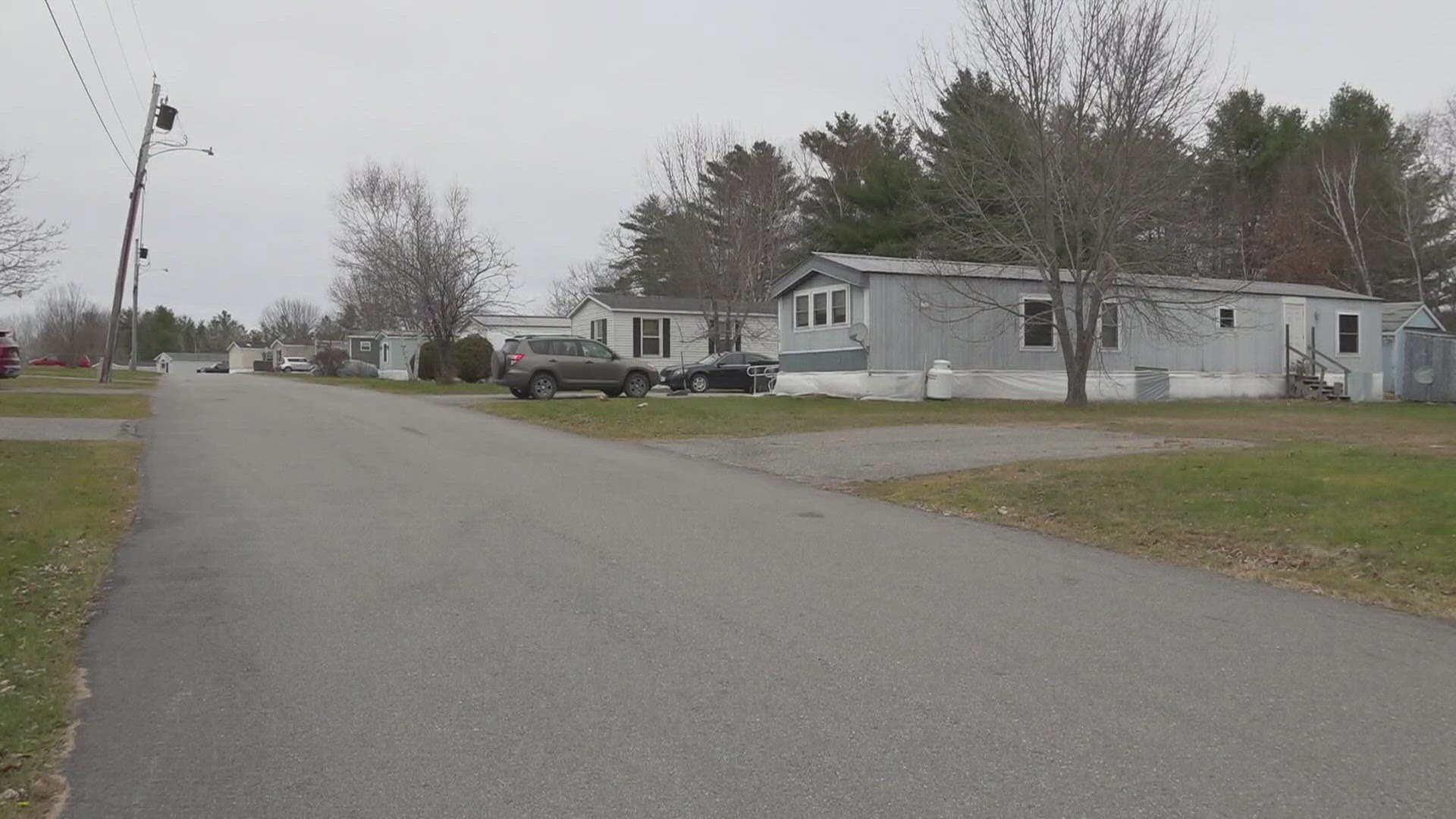MAINE, USA — Eighth-generation farmer Ben Edwards hustles from his family’s seaside Machias farmhouse at Schoppee Farm each morning, often with one of his two toddlers on a hip, his lanky legs moving swiftly, first to the greenhouse where he cares for tender organic hemp plants, and then to the fields to bring in the harvest and put in cover crops for winter.
Down the road at Welch Farm in Roque Bluffs, sixth-generation farmer Lisa Hanscom and her seven-year-old grandson survey the family’s guest cabins and iconic wild blueberry barrens as they reach full splendor after the harvest, the cool ocean air transforming the tiny green leaves into shimmering hues of crimson, copper, and magenta.
In neighboring Aroostook County, trees are splashed with another blaze of carnival color, framing thousands of acres of rolling potato fields, dotted with tractors as farmers and laborers toil from dawn to dusk harvesting the last of this year’s crop.
But some of Maine’s bucolic landscape might soon be ceded to help meet the state’s desperate demand for housing.
A new bi-partisan bill introduced in late September by U.S. Senators Angus King (I-ME) and Jerry Moran (R-KS) would pour an additional $200 million into an existing federal program to incentivize rural property owners to build rental housing on their land, such as an attached apartment unit or a small home nearby.
The Farmhouse-to-Workforce Housing Act is just one piece of a patchwork effort to create a flurry of housing around the country after decades of lagging construction, aging stock, zoning restrictions and local resistance to building collided with a dramatic change in migration patterns post-pandemic, leaving rural communities in particular struggling to deal with a lack of places for people to live.
A study commissioned by Gov. Mills and MaineHousing found that Maine will need upwards of an additional 84,000 new housing units by 2030. The state currently has about 741,803 housing units, nearly a quarter of which were built before 1940.
In a press release, Sen. King said the bill aims to make it cheaper and easier for Maine people and residents across the country to renovate their homes or build new ones on their land.
“Maine is one big, small town connected by long roads, and when I drive those long roads, I see potentially available properties in the same communities that are facing crisis levels of housing availability,” King said.
The biggest push to increase residential and workforce housing is in Washington and Aroostook counties, where the need is greatest due to historically lower housing production, coupled with an influx of wealthier new residents and property investors buying up already meager housing stock.
According to housing trends based on permits issued, the MaineHousing study found that Washington and Aroostook counties — two of the state’s four poorest counties — will need to add an average of 50% and 40% more housing, respectively, over each of the next five years to keep up with existing and future needs and hit the state’s lofty goals.
In Aroostook County that means adding 390 housing units each year, a roughly 333% increase over current production. In Washington County, it will require a truly herculean feat — 830 new housing permits will have to be issued each year — a 1,283% leap in production each year over what the county currently manages.
At a multi-day housing workshop held in Machias last month, about two dozen municipal leaders from ten rural communities gathered to learn about programs, strategies, and available funding to help increase housing and manage growth. The workshop is the second in a three-year series being facilitated by GrowSmart Maine, a non-profit community planning advocacy group. The program is funded in part by a $304,636 USDA Rural Community Development Initiative grant.
Sen. King’s proposed legislation, which is currently under review by the Senate Banking Committee, taps into an existing, under-funded USDA rural housing preservation grant program that was originally intended to help rural property owners renovate their homes. This fiscal year’s funding for the program is $12.2 million.
According to Senators King and Moran, the program is underused and receives limited funding. If adopted, the legislation would expand the national program for rural housing creation by increasing its funding by $200 million, a more than 1500 percent jump, and expanding eligibility for rural homeowners willing to yield some of their land to create more housing on their property — such as an attached apartment unit or a small home nearby — to be available for rent, according to King’s press release.
Low- or medium-income rural property owners with a primary home that is 25 years or older would be eligible for two grants of up to $100,000 each to construct rental housing in the home or on their land.
King’s proposal follows legislation passed by Maine lawmakers in 2022 that effectively eliminated single-family zoning in certain areas by requiring municipalities to ensure local regulations allow the creation of different types of housing units, including multi-family dwellings and so-called accessory dwelling units.
That prospect of incentives to develop housing on farmland makes Edwards, from Schoppee Farm, more than a little worried.
“Anything that erodes the ability of farms to continue somehow or another as actual farms, I don’t see the long-term gain in that,” said Edwards. “Not get too grandiose about it, but I really think it’s just overall bad for our culture and our communities, period.”
Data from the American Farmland Trust shows that Maine’s already sparse farmland is under significant threat. According to the AFT, from 2001 to 2016, 17,000 acres of Maine’s agricultural land were developed or compromised, converted to residential or commercial use. The analysis found that the converted land could have generated $10 million in annual revenues had it stayed as farmland.
About half of Maine’s remaining agricultural land is considered “Nationally Significant Land,” classified by AFT as the nation’s best land for long-term production of food and other crops, according to the report..
Edwards said he’s witnessed farmland slipping away as many farmers, struggling under the rising costs of farming and roller-coaster revenues, buckle to developers. He’s concerned the proposed incentives for farmers to build housing on farmable land would add one more threat, and points to solar farms, built on agricultural lands, as an example of how fast an industry can gobble up valuable, historic farmland.


The proposed legislation by Sens. King and Moran could add fuel to the debate over farmland conversion. New federal housing incentives and the already hotly contested solar issue also could pit the state’s climate action plan goals against its housing goals.
Details of the proposed federal rural housing legislation are yet to be determined, including how funds would be allocated to each state and each county, said Rhiannon Hampson, Maine State Director for USDA Rural Development, in a written response to questions from The Maine Monitor.
Hampson added that Maine benefits greatly from the Rural Development Housing Preservation Grant program, a total of $169, 658 in fiscal year 2023. The funding was split between Penquis Community Action Agency and Western Maine Community Action to rehabilitate low- and very-low-income, owner-occupied homes.
“It’s a way in which we can strengthen the work of our partners, such as Community Action Partnership agencies like Penquis and others, to do the direct work for folks to create more and safer housing options.”


Maine is suffering growing pains as it struggles to balance agricultural, energy, and housing needs. There has been a flurry of recent legislative actions at the state and local level to either expand or curtail regulations on everything from expanding the areas where modular housing can be built to reining in how much solar and wind power can impact farmland, wildlife and fisheries habitat.
Down on Englishman Bay, wild blueberry farmer Lisa Hanscom sees the issues a little differently than her neighbor, Edwards. Hanscom believes there needs to be a balance.
Sixteen years ago, Hanscom erected rental cabins on her family’s still-productive blueberry farm, diversifying into agricultural tourism. Her great grandfather fueled the farm with a wind tower and Hanscom would like to add some solar panels to help curb her energy costs. She hopes lawmakers strike the right balance.
“Don’t take away the ways that farmers can make money, to make sure that they can stay there and survive — so they don’t have to sell off the farm to developers.”
This story was originally published by The Maine Monitor, a nonprofit and nonpartisan news organization. To get regular coverage from the Monitor, sign up for a free Monitor newsletter here.



